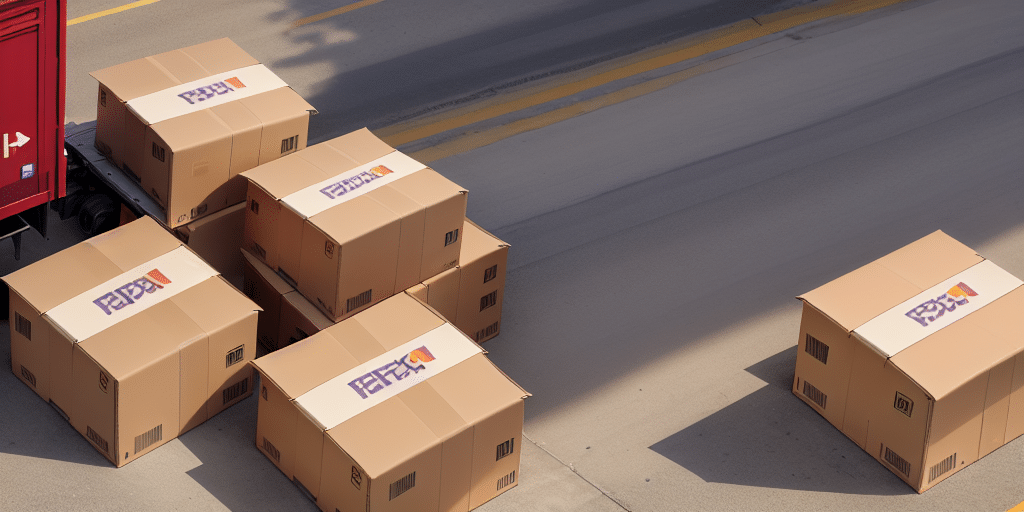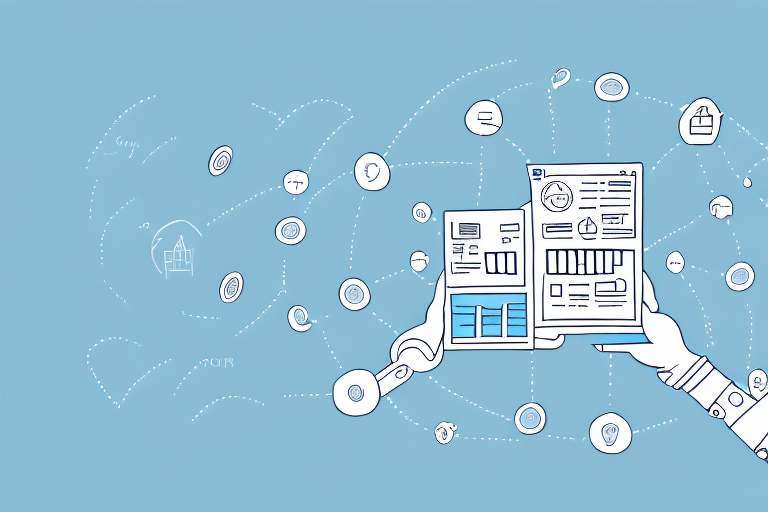Does UPS WorldShip Support Electronic Commercial Invoices?
If you're involved in international shipping, you know that commercial invoices play a crucial role in ensuring goods are properly accounted for at customs. These documents detail the contents of a shipment, their value, and their country of origin. With the rise of e-commerce, you may be wondering if UPS WorldShip offers electronic commercial invoice (eCI) capabilities. In short, the answer is yes. This article explores what eCIs are, their benefits, and how to create them using WorldShip.
Understanding Commercial Invoices in Shipping
Before delving into UPS WorldShip's eCI feature, it's important to understand why commercial invoices are necessary. When goods pass through a country's borders, customs officials need to verify that the contents of a shipment are properly declared and that the correct duties and taxes are paid. Commercial invoices provide a detailed breakdown of each item's value, origin, and Harmonized System (HS) code, which determines the applicable tax rate. They also list information about the shipper and consignee, the terms of sale, and the total value of the shipment.
Commercial invoices are vital not only for customs officials but also for the parties involved in the shipment. The shipper can use the invoice as proof of shipment and payment, while the consignee can verify the contents of the shipment and ensure receipt of all ordered items. Additionally, commercial invoices are essential for insurance purposes, providing a detailed record of shipped items and their value.
The Benefits of Electronic Commercial Invoices
Using electronic commercial invoices (eCIs) offers several advantages over traditional paper-based invoices:
- Time and Cost Savings: eCIs eliminate the need for printing, manual filling, and attaching documents to packages, speeding up the customs processing time and reducing paper and printing costs.
- Accuracy and Consistency: Data can be pre-populated from existing records and verified against known HS codes and tariff rates, minimizing errors.
- Enhanced Visibility: All parties can access the same document in real-time, improving transparency and coordination.
- Environmental Sustainability: By reducing paper usage, eCIs contribute to lowering the carbon footprint of international shipping.
According to the World Bank, digital documentation in logistics can increase efficiency by up to 30%, showcasing the significant impact of adopting eCIs.
Creating Electronic Commercial Invoices with UPS WorldShip
UPS WorldShip is an integrated shipping software solution designed to streamline the shipping process. It offers robust support for creating electronic commercial invoices. Follow these steps to generate an eCI using WorldShip:
- Open WorldShip and navigate to the 'Shipping' tab.
- Select 'Documents' and then 'Customs Forms'.
- Choose 'Electronic Commercial Invoice' from the dropdown menu.
- Enter the required information, including shipper and consignee details, item descriptions, values, and HS codes.
- Review your entries and click 'Print Preview' to ensure accuracy.
- Click 'Save' to generate the eCI file.
- Transmit the file directly to customs or attach it to the shipment in WorldShip.
Generating eCIs with WorldShip not only saves time but also reduces the risk of errors and delays in the customs clearance process. The software's integration with UPS systems facilitates seamless data transmission, enhancing overall efficiency.
Advantages of Using WorldShip for eCIs
- Real-Time Tracking: Monitor the status of your shipments and receive alerts for any issues or delays.
- Error Reduction: Automated data entry minimizes manual errors, ensuring compliance with customs requirements.
- Cost Efficiency: Reduce printing and administrative costs by leveraging digital documentation.
Step-by-Step Guide to Generating eCIs in WorldShip
For those new to WorldShip or seeking a detailed guide, follow this step-by-step process to create electronic commercial invoices:
- Open WorldShip and select the 'Shipping' tab from the main menu.
- Navigate to 'Documents' in the sidebar, then choose 'Customs Forms'.
- Click on 'Electronic Commercial Invoice' to start creating your eCI.
- Fill in the required fields, including shipper and consignee information, item descriptions, unit values, and quantities. Use the WorldShip HS Lookup tool to find accurate HS codes.
- Verify all information and click 'Print Preview' to review the document.
- Once confirmed, click 'Save' to generate the eCI file.
- Transmit the eCI directly to customs via WorldShip's integrated EDI feature or print a hard copy if required.
Utilizing eCIs through WorldShip can significantly expedite the customs clearance process, minimizing delays and ensuring compliance with international shipping regulations.
Common Mistakes to Avoid When Creating eCIs
While WorldShip's eCI feature is user-friendly, be mindful of the following common mistakes that can lead to delays or customs rejection:
- Incorrect HS Codes: Always verify the correct HS code for each item using reliable tools like the World Trade Organization HS Lookup.
- Incomplete Information: Ensure all required fields are accurately completed. Missing or inconsistent data can result in customs delays.
- Value Misrepresentation: Accurately declare the value of goods to avoid issues with customs authorities.
- Format Compliance: Different countries may have specific requirements for commercial invoice formats. Research and adhere to the destination country's regulations.
Avoiding these mistakes helps ensure smooth and efficient customs processing, reducing the risk of fines or shipment rejections.
Tips and Best Practices for Using WorldShip eCIs
Maximize the efficiency and accuracy of your electronic commercial invoices with these tips:
- Save Templates: If you frequently ship similar items to the same destinations, create and save eCI templates to streamline the process.
- Double-Check Entries: Review all information thoroughly before submitting to prevent errors that could delay shipments.
- Test Your Setup: Conduct test transactions to ensure that your WorldShip configuration correctly generates and transmits eCIs.
- Leverage TradeAbility Services: Consider using WorldShip's TradeAbility services for additional tools like denied party screening and tariff calculations.
- Stay Updated: Keep WorldShip software updated to benefit from the latest features and compliance updates.
Implementing these best practices enhances the reliability and efficiency of your shipping operations, ensuring that your eCIs meet all necessary requirements.
Integrating Accounting Systems with WorldShip
Integrating your accounting system with WorldShip can further streamline your invoice management. This integration allows for automatic transfer of billing and shipment data between systems, reducing manual data entry and minimizing errors.
Benefits of this integration include:
- Enhanced Financial Tracking: Easily monitor shipping costs and their impact on your overall finances.
- Improved Decision-Making: Access comprehensive data to make informed decisions about shipping strategies and carrier selections.
- Operational Efficiency: Streamline workflows by consolidating financial and shipping information in a single system.
Tools like QuickBooks or Xero can often be integrated with WorldShip to facilitate seamless data synchronization.
Comparing WorldShip's eCI Capabilities with Other Shipping Software
While WorldShip offers comprehensive eCI capabilities, it's essential to compare it with other shipping software to determine the best fit for your business needs. Factors to consider include:
- Cost: Evaluate the pricing structures to ensure they align with your budget.
- Ease of Use: Consider the user interface and learning curve associated with each software.
- Integration: Assess how well the software integrates with your existing systems and platforms.
- Feature Set: Ensure the software offers all necessary features, such as eCI generation, tracking, and reporting.
- Customer Support: Look for reliable customer support to assist with any issues or questions.
Alternative shipping software options include:
- ShipStation: Offers robust eCI features and integrates with multiple marketplaces and shopping carts. However, it may be more expensive for businesses with lower shipping volumes.
- Shippo: Known for its user-friendly interface and competitive pricing, though it may lack some advanced integration capabilities compared to WorldShip.
Choosing the right shipping software involves balancing features, cost, and how well it integrates with your existing workflows.
Conclusion
UPS WorldShip provides robust electronic commercial invoice (eCI) capabilities, enabling businesses to streamline their international shipping processes, reduce costs, and enhance accuracy. By leveraging eCIs, companies can expedite customs clearance, minimize errors, and contribute to environmental sustainability. Additionally, integrating WorldShip with your accounting system further optimizes operational efficiency.
However, it's crucial to ensure compliance with all relevant regulations and requirements when using eCIs. Accurate and complete information is essential to avoid delays, fines, or legal issues. Businesses should collaborate with shipping providers and consult with legal experts to maintain compliance.
Ultimately, adopting UPS WorldShip's eCI features can significantly improve your shipping operations, making it a valuable tool for businesses engaged in international trade.






















